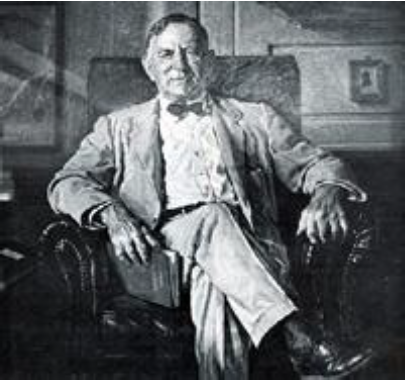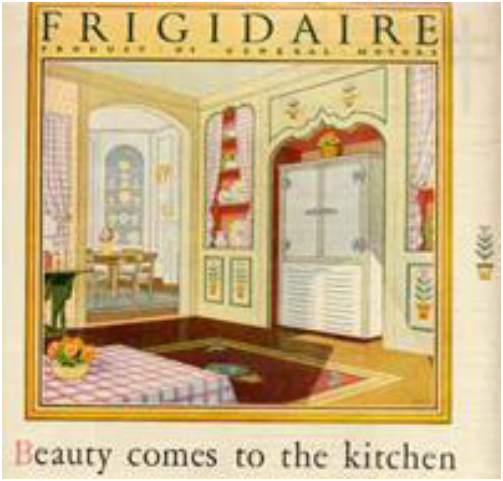Refrigerator
In 1919, Mr. John Lee Pratt, a King George County boy who would become a multimillionaire and owner of Chatham Manor in Stafford, was a General Motors engineer. He had originally worked for DuPont and was loaned to General Motors to assist in troubles they were having with refrigerator development in their “Frigidaire Department.”
GM had produced the Frigidaire that year. It was one of the first mechanical refrigerators for home use. They were called “mechanical” because some were powered by electricity, others by gas.
But the first Frigidaire owners were not happy. In fact, they had so many complaints that GM sent John Lee Pratt to Ohio to close down the Frigidaire plant.
Mr. Pratt wasn’t sure that was the right idea. In visits with Frigidaire owners, he offered their money back, but received no takers. No one wanted to return to the old ice boxes, and they certainly didn’t want to go back to those 19th-century days when ice was taken from local millponds and stored in ice houses.
“Keep the plant open and improve the product,” was John Lee Pratt’s advice to General Motors. He re-designed a better refrigerator, based on the use of the relatively safe refrigerant, freon.
Frigidaire became a household word, not only in the Stafford – Fredericksburg area, but throughout America. No matter what the brand, a refrigerator was referred to as a Frigidaire. By 1923 there were 20,000 mechanical refrigerators in the United States. This figure jumped to 850,000 by 1933 and two million by 1936.

John Lee Pratt eventually became vice president of General Motors. He retired and purchased Chatham in 1931. He lived there from 1937 -1975 and became a local iconic figure. Pratt and his wife, Lillian, had many distinguished visitors, including Henry Ford, and Generals Dwight Eisenhower, and George Marshall. They viewed his impressive Stafford house, grounds and gardens. He probably served them refreshing beverages from his own Frigidaire.
Based on an article by Barbara Crookshanks
For original article: http://history.librarypoint.org

